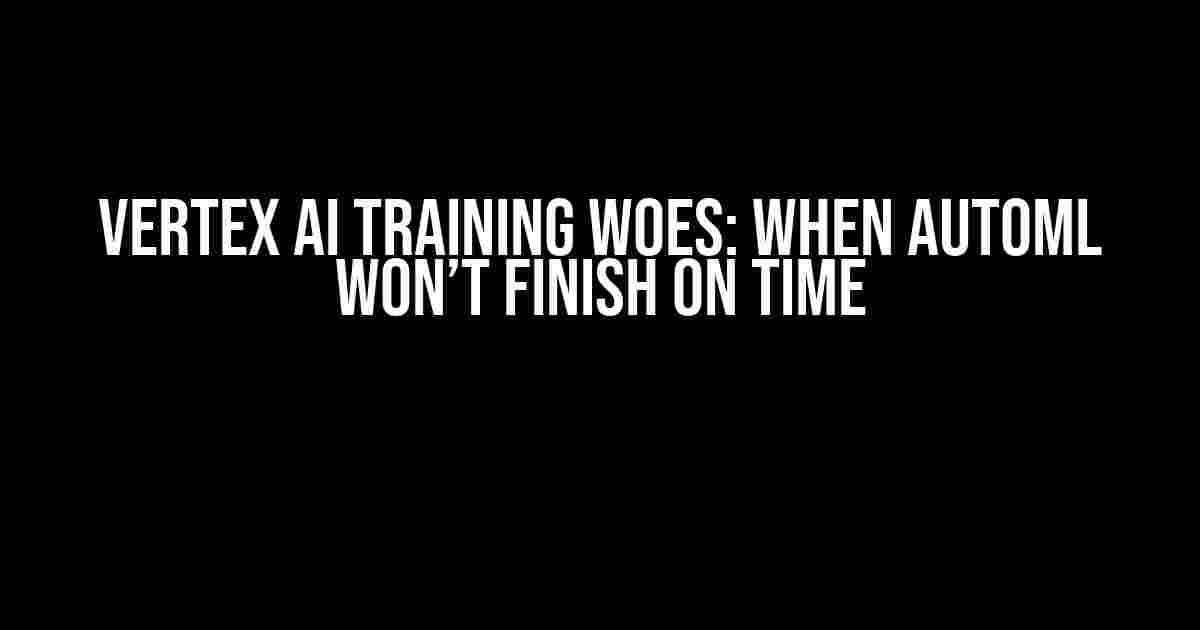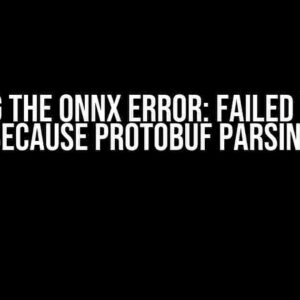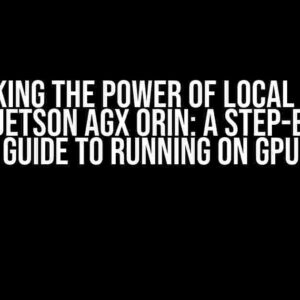Are you frustrated with your Vertex AI training job stuck in limbo, ignoring the allocated time and refusing to finish autoML training? You’re not alone! In this article, we’ll delve into the common causes of this issue, explore potential solutions, and provide a step-by-step guide to get your training job back on track.
Understanding Vertex AI AutoML Training
Before we dive into the troubleshooting process, let’s quickly review how Vertex AI AutoML training works. AutoML (Automated Machine Learning) is a powerful feature in Vertex AI that enables users to train high-quality machine learning models without extensive ML expertise. The training process involves the following stages:
- Data Ingestion: Vertex AI ingests your dataset and prepares it for training.
- Hyperparameter Tuning: AutoML performs hyperparameter tuning to find the optimal combination for your model.
- Model Training: The selected hyperparameters are used to train the model.
- Model Evaluation: The trained model is evaluated on a holdout set to estimate its performance.
Common Causes of Vertex AI Training Issues
Now that we’ve covered the basics, let’s explore some common reasons why your Vertex AI training job might be stuck or ignoring the allocated time:
- Insufficient Resources: AutoML training is a resource-intensive process. If your training job is allocated insufficient resources (e.g., CPU, memory, or GPU), it may not finish within the allocated time.
- Dataset Issues: Poor data quality, incorrect data formatting, or missing values can cause the training process to slow down or fail.
- Model Complexity: Complex models require more resources and time to train. If your model is too complex, it may exceed the allocated time.
- Hyperparameter Tuning: AutoML’s hyperparameter tuning process can be time-consuming, especially when dealing with large datasets or complex models.
- Vertex AI Errors: Sometimes, internal errors or service disruptions can cause training jobs to stall or fail.
Diagnosing the Issue
To identify the root cause of the problem, follow these steps:
- Check the Training Job Logs: Examine the training job logs to identify any errors or warnings that may indicate the cause of the issue.
- Verify Dataset Quality: Review your dataset to ensure it’s correctly formatted and free of errors.
- Check Resource Allocation: Verify that your training job has sufficient resources (CPU, memory, and GPU) allocated.
- Review Model Complexity: Evaluate your model’s complexity and adjust it if necessary to reduce training time.
- Monitor Hyperparameter Tuning: Observe the hyperparameter tuning process to ensure it’s not stuck or taking too long.
Solutions and Workarounds
Now that we’ve identified the potential causes, let’s explore solutions and workarounds to get your Vertex AI training job back on track:
Optimize Resource Allocation
Ensure your training job has sufficient resources allocated. You can do this by:
- Increasing the number of machines or nodes allocated to the training job.
- Upgrading to a more powerful machine type (e.g., from CPUs to GPUs).
- Reducing the batch size to reduce memory requirements.
Data Preprocessing and Quality
Improve your dataset’s quality by:
- Handling missing values or outliers.
- Feature scaling or normalization.
- Data augmentation to increase dataset size.
Simplify Model Complexity
Consider simplifying your model by:
- Reducing the number of hidden layers or neurons.
- Using pre-trained models or transfer learning.
- Regularization techniques to reduce overfitting.
Hyperparameter Tuning Optimization
Optimize the hyperparameter tuning process by:
- Reducing the number of hyperparameters to tune.
- Using a more efficient hyperparameter tuning algorithm (e.g., random search instead of grid search).
- Limiting the number of trials or iterations.
Vertex AI Error Handling
If you suspect an internal Vertex AI error, try:
- Restarting the training job.
- Checking the Vertex AI status page for service disruptions.
- Contacting Vertex AI support for assistance.
Code Examples and Snippets
To illustrate the concepts above, here are some code examples and snippets in Python:
import vertexai
# Create a Vertex AI client
client = vertexai.Client()
# Create a training job
training_job = client.create_training_job(
display_name="My Training Job",
dataset=my_dataset,
model=my_model,
hyperparameter_tuning_config={
" HyperparameterTuningAlgorithm": "GRID_SEARCH",
"maxTrials": 10
}
)
# Check training job status
training_job_status = training_job.status
print("Training Job Status:", training_job_status)
# Increase machine type to accelerate training
training_job.update(machine_type="n1-standard-16")
Conclusion
Vertex AI autoML training can be a powerful tool, but it’s not immune to issues. By understanding the common causes of stuck or ignored training jobs, diagnosing the problem, and applying the solutions and workarounds outlined above, you’ll be well on your way to getting your training job back on track. Remember to monitor your training job closely and adjust as needed to ensure successful model training.
| Causes | Solutions |
|---|---|
| Insufficient Resources | Increase machine type, reduce batch size, or add more nodes |
| Dataset Issues | Handle missing values, feature scaling, or data augmentation |
| Model Complexity | Simplify model architecture, reduce hidden layers, or use pre-trained models |
| Hyperparameter Tuning | Reduce hyperparameters, use random search, or limit trials |
| Vertex AI Errors | Restart training job, check status page, or contact support |
By following these guidelines and troubleshoots, you’ll be able to overcome common Vertex AI autoML training issues and successfully train your machine learning models.
Frequently Asked Question
Get answers to your burning questions about Vertex AI training ignoring allocated time and not finishing autoML training!
Why is my Vertex AI training not completing within the allocated time?
This could be due to various reasons such as insufficient resources, complex data, or inadequate model configurations. Make sure to check your dataset size, model complexity, and resource allocation to ensure they are suitable for the task at hand. You can also try scaling up your resources or optimizing your model architecture to improve training efficiency.
How can I optimize my autoML training to finish within the allocated time?
To optimize your autoML training, try the following: (1) preprocess your data to reduce noise and outliers, (2) select the most relevant features, (3) experiment with different model architectures, (4) tune hyperparameters using Vertex AI’s built-in hyperparameter tuning feature, and (5) monitor your training progress and adjust resources accordingly.
What are some common issues that can cause Vertex AI training to ignore allocated time?
Some common issues that can cause Vertex AI training to ignore allocated time include: (1) dataset size exceeding resource capacity, (2) inefficient model architecture, (3) inadequate resource allocation, (4) poor data quality, and (5) hyperparameter tuning issues. Check your training logs and resource utilization to identify the root cause of the issue.
How can I troubleshoot Vertex AI training that’s not finishing within the allocated time?
To troubleshoot Vertex AI training, follow these steps: (1) check your training logs for errors or warnings, (2) review your resource allocation and utilization, (3) inspect your model architecture and hyperparameters, (4) verify your dataset quality and size, and (5) consider reaching out to Vertex AI support or community forums for further assistance.
Are there any best practices to ensure Vertex AI training completes within the allocated time?
Yes, some best practices to ensure Vertex AI training completes within the allocated time include: (1) planning and designing your experiment carefully, (2) allocating sufficient resources, (3) selecting suitable model architectures, (4) tuning hyperparameters wisely, (5) monitoring training progress, and (6) iteratively refining your approach based on results.





